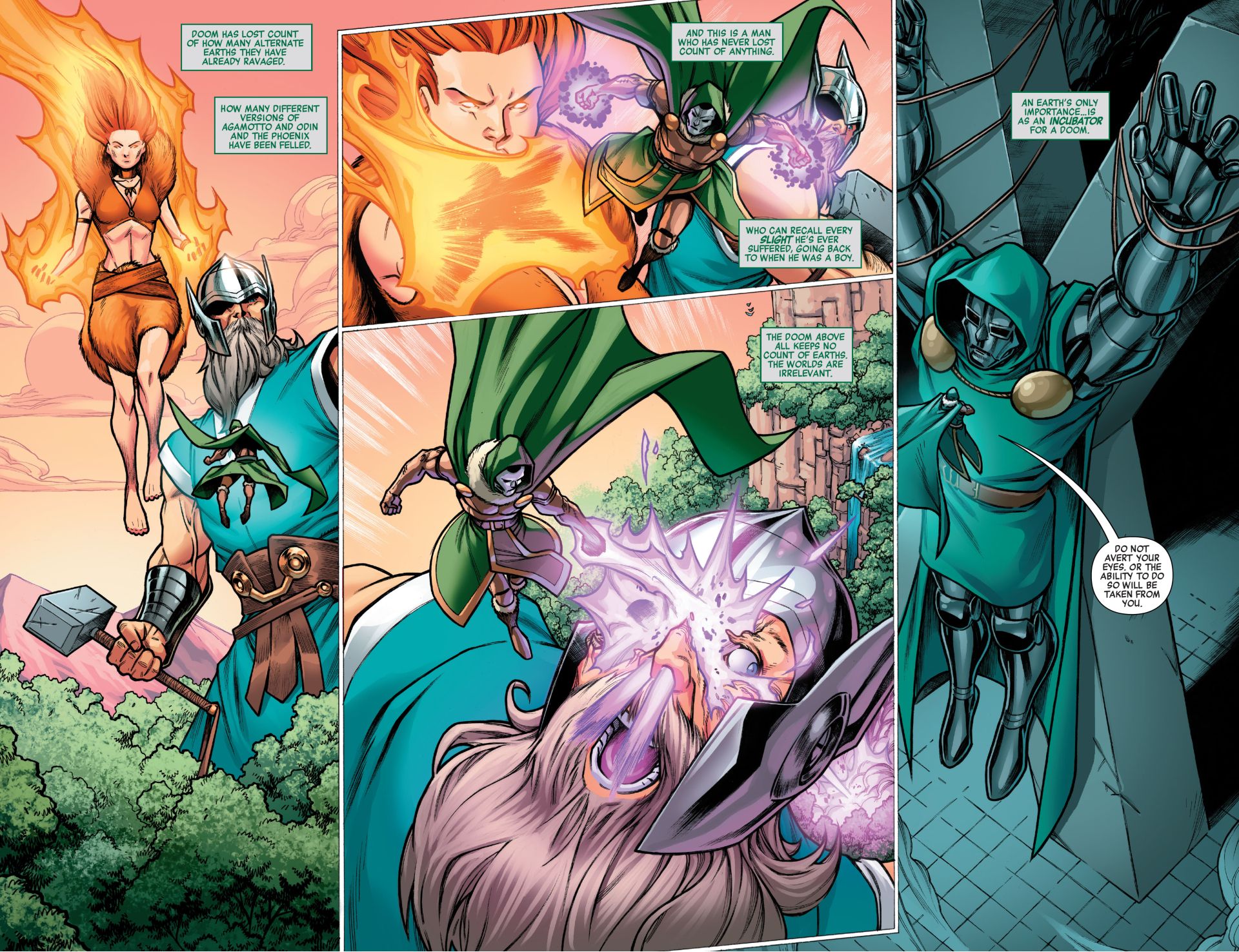Warning: contains minor spoilers for Avengers: Forever
The Multiverse has been the focus of the Avengers‘ storylines for the past few years, but the results seem lackluster when compared to Marvel’s other big multi-dimensional brand, the Spider-Verse. While the Spider-Man variants captured fans’ imagination with their unique concepts, the characters, and worlds shown during Jason Aaron’s Avengers/Avengers: Forever run have been quite forgettable.
Starting from Avengers #50, the Earth’s Mightiest Heroes found themselves at the center of the machinations of two fearsome villains, Mephisto and a version of Doctor Doom stronger than Kang who calls himself the Doom Supreme. Their plan is to conquer every Earth in the Multiverse by traveling back in time and killing the first version of the planet’s defenders, the Prehistoric Avengers, strangling the Heroic Age in its cradle. Doom assembled the worst villains from across dimensions, the Multiversal Masters of Evil, while Mephisto created the Council of Reds, a gathering of all the different versions of the Prince of Lies from the Multiverse. Avengers: Forever is the comic that dealt with the multiversal aspect of this crisis (while Avengers remained focused on Earth-616), showing the different Earths conquered by the Masters and turned into nightmarish landscapes. However, this kaleidoscope of worlds and different versions of familiar characters has failed to impress.
While Aaron’s big multiversal Avengers/Avengers: Forever storyline has been fun in part, there’s really been no depth to any of the new creations. For example, a group of Avengers operating on one of the Earths conquered by the Masters includes a Tony Stark who became Ant-Man, an Infinity Stone-powered Thing, and a female Moon Knight. These look fun, but they mostly come off as random combinations of characters that are forgettable beyond their simple gimmick. This is especially the case in Avengers: Forever #5, by Jason Aaron, Jim Towe, and Guru-eFX, which sees two new worlds in the multiverse: one where everyone is a Man-Thing, and one where everyone is just a giant. While the first world just took one Marvel character and made it its theme, the second seems to have picked one random idea because it would never show up again.

This is contrasted with the Spider-Verse, which has done an amazing job of capturing fans’ imagination with characters that bring their own tone, concept, and art style to the larger Spider-Man mold. Characters like Miles Morales, Spider-Gwen, Spider-Punk, Peni Parker, Spider-Man Noir, Spider-Ham, Spider-Man 2099, etc. This wide range of Spider-Man variants all have different power levels and all do something different which takes Peter Parker’s origin and iconography and spins it in a new, unique direction that makes fans want to know and see more. This approach really emphasizes the potential of the concept of the Multiverse: an expansion of creativity for authors who now have a much larger canvas and color palette to paint their stories.
The other side of the coin is to consider the Multiverse a huge blender where authors can throw everything in because, with an infinite number of realities, nothing really matters in the end. Avengers‘ lazier multiversal approach with its many remixes but lack of heart really shows what makes the Spider-Verse shine, as each different Spider-Man comes with a wildly different story, tone, and art direction, rather than just a “this one is a giant” label attached.




